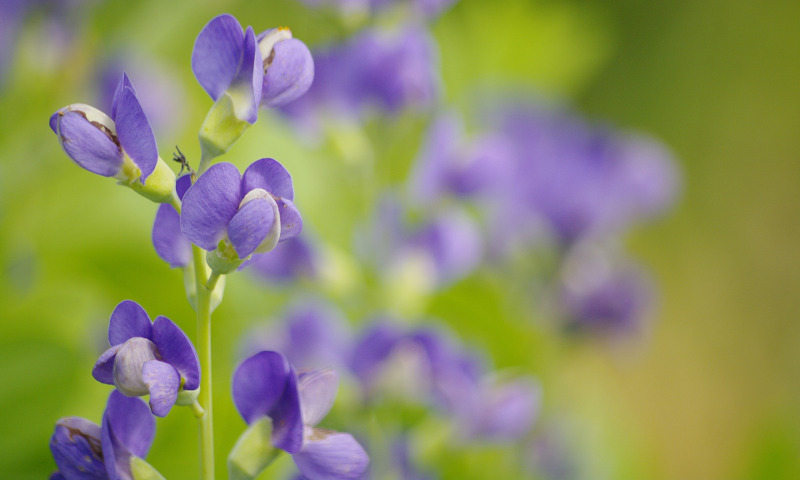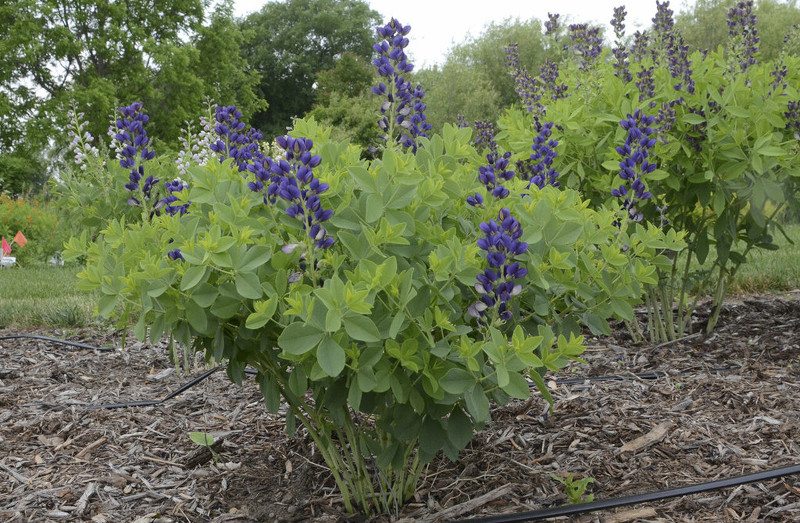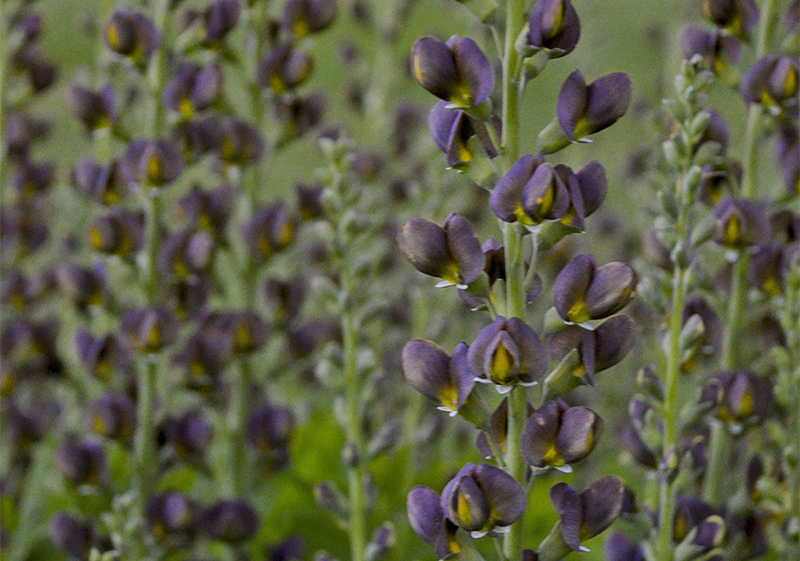Baptisia plants, Baptisia australis, are American prairie natives that are disease-resistant, drought-tolerant, showy perennials, hardy from USDA zones 3-10. Baptisias were prized for their true blue flower spikes, from which a “false indigo” dye could be made, which American farmers sold to Europeans, thus their name.
The blue-green rounded leaves give away their heritage in the Fabaceae, or pea family. They form shrub-like clumps about four feet tall and wide, and cultivars now offer solid and bicolor flowers in yellow, purple, and white. Blooming in late spring for about six weeks, the showy seed heads persist and offer fall interest as well. While toxic to many insects, they are hosts to several butterfly species as well.

Planting False Indigo
Baptisias thrive in sites with full sun in neutral to slightly acidic, well-drained soil on the dry side. Shadier locations can cause floppy, weak growth. Rich soil is ideal, but they will tolerate poor soil as well. Dig a hole twice as wide as the root ball. Allow space for the clump to grow up to four feet wide, and give it room between other plants to promote air circulation. Small plants may take two years to bloom.
Watering False Indigo
Water your false indigo well the first year to enable it to become established. Water deeply at least once a week. If the weather is especially dry or hot, water two or three times a week to help your young plant keep its roots protected. While it prefers consistent moisture, it forms an almost solid taproot, which helps it become highly drought tolerant over time.
Fertilizing False Indigo
Baptisias succeed even in areas of very low fertility, being adapted to the American prairie. If desired, choose a balanced fertilizer in spring, repeating monthly in summer. You can simply use a slow-release type in spring.

Pruning False Indigo
No pruning is really necessary for false indigo, as all growth renews from the base in spring. You can cut back the plant by one-third to shape it after blooming. Removing the spent flowers (deadheading) is also optional, but then you won’t enjoy the interesting seed heads rattling in the fall breeze.
Caring For False Indigo in Pots
Baptisias would need a very large pot to thrive, because they form a significant taproot, and don’t like transplanting. If you plant in a large-raised bed, or livestock trough, use well-draining soil mix, and pick a location with at least six hours of sun. Water consistently the first year or two. Cut back foliage in the fall.

Winter Care for False Indigo
These tough plants need nearly no pampering. Frost will cause plants to turn black and collapse, so most gardeners prefer cutting back in fall to mushy clean-up in winter. A nourishing mulch of compost is welcome in the fall. Consider planting some plants with evergreen foliage nearby to add winter interest around this large plant. In spring, some slow-release balanced fertilizer can be applied.
Common False Indigo Care Questions
Are False Indigo Drought-Tolerant?
These flashy American native plants are drought tolerant, once established and the tap root is well established. It will need regular moisture until then, particularly during the hottest, driest days of summer, but once that tap root is well developed, the plants become highly drought tolerant. Also, butterflies love them!
How Do You Maintain False Indigo?
There are a few options for maintaining false indigo. You can really just leave them alone and they'll be just fine. You can simply remove the flower heads and seed pods. Removing the seed pods can help prevent the stems from laying over from the weight of the pods.
In late winter or early spring, if you're looking to give the plant a rejuvenating boost, you can trim it to within 6 inches of the base of the plant and they'll come back with even more height than before!
How Do You Keep Fake Indigo From Flopping?
Removing the seed pods can help prevent the stems from laying over from the weight of the pods. You can also place cages around the plants, early in the spring to help support the plant once the flowers and seed pods get too heavy.
What Is The Size Of False Indigo?
Depending on the variety of false indigo, they can get anywhere from 1-4 feet tall.
Why Does False Indigo Leaves Turning Black?
False indigo leaves quickly turn black in autumn. You can leave them, enjoy the visual interest in the winter, or you can trim them back, whichever your preference.
Have a question about False Indigo? Fill out the form below and we will try and get back to your question as soon as possible. We may even feature your question on this article to help other gardeners!
 |
Author Erica Browne Grivas - Published 06-15-2021 |
